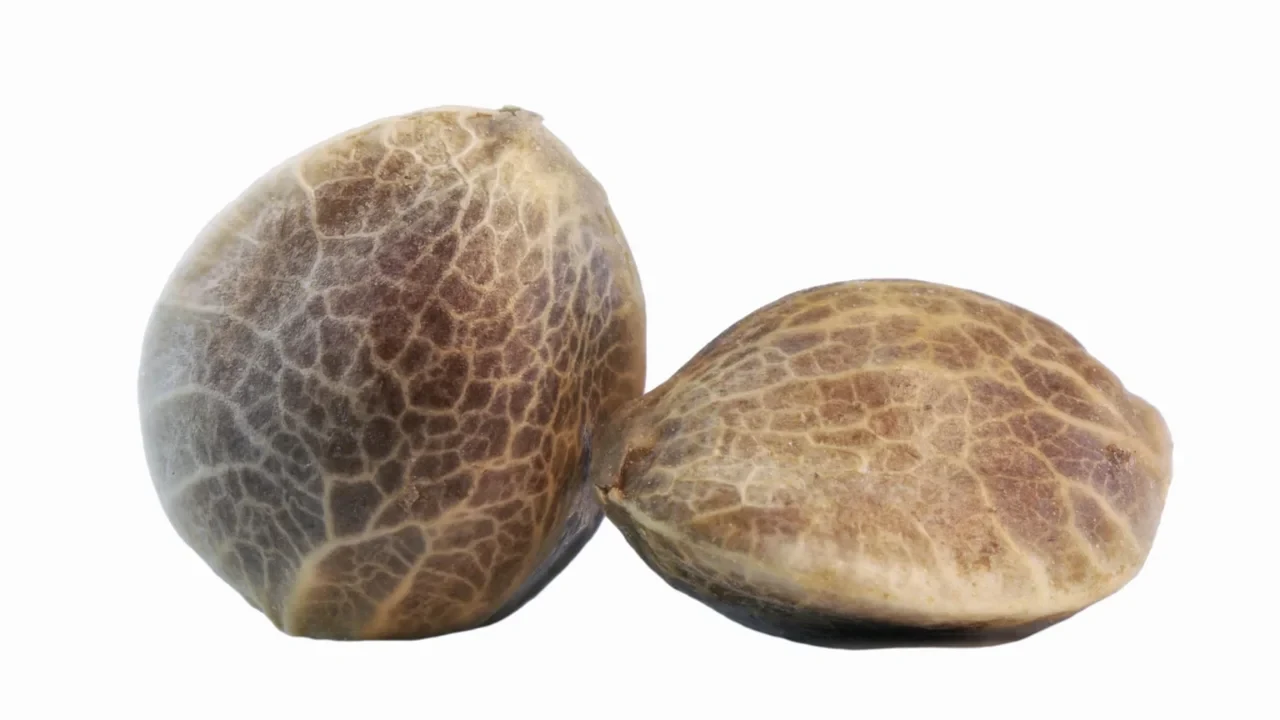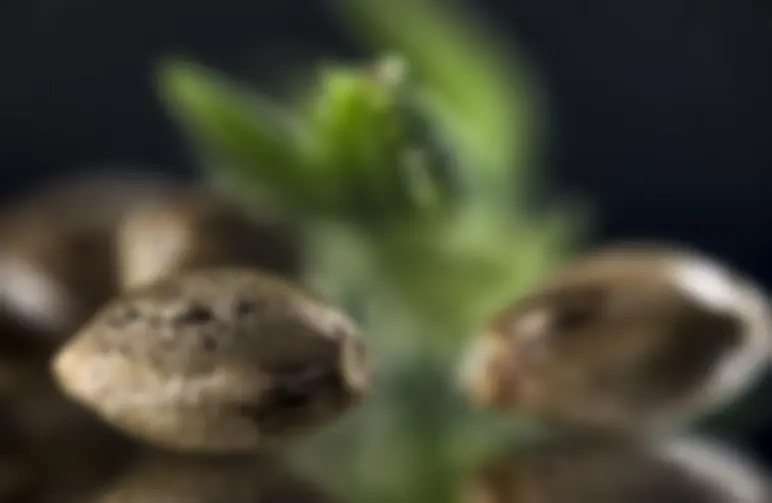Determining the sex of your cannabis plant is very important. Most growers require female plants because these are the ones that produce the resiny buds we love.
Males, by comparison, simply produce the sacs of pollen used to pollinate female strains to produce seeds. Female varieties shouldn’t be pollinated. Otherwise, they will no longer produce their THC-laced resiny buds.
In a regular growing setup, males have to be removed as soon as they are spotted to reduce this risk of pollination. Otherwise, you run the gamble of turning your precious resiny buds into seeds and spoiling the whole crop.
But can you tell the difference between weed seeds before they’re cultivated?
Can you tell male from female cannabis seeds?
Simply put, there is no way to tell the difference between male and female cannabis seeds before they’re planted. There is nothing in their appearance or size to indicate what will grow. The only way to tell is to grow it, wait and see.
However, you can buy feminized seeds directly from WeedSeedsExpress to guarantee a female plant every time. Feminized seeds are bred exclusively to produce female plants.
Knowing your seeds are female from the beginning is the perfect solution for hobbyists and smaller setups that can’t waste resources.
If you’d prefer to plant regular weed seeds, experiment, and discover the sex of your plant as it grows, you can choose these here too.

Myths about determining the sex from the cannabis seeds' appearance
There are plenty of myths out there on how to determine if a cannabis seed is male or female. Don't be duped by them.
One of the most common is that female seeds have perfectly round crater-like impressions under them, just like a volcano. This is false. Crater-like impressions or indents can form on any seed variety, no matter the sex.
Other myths include those about size and shape. Neither male nor female seeds are smaller or bigger than one another.
What’s more, some have speculated that male seeds are heavier, ragged, or protruded, meaning that if you roll them on a table, they thump like a flat tire. By comparison, it’s supposed that female seeds are smoother and therefore roll easily across a table.
This is also false. Any seed can be any shape – it’s got nothing to do with sex.
Finally, there are no other indicators to tell the sex of cannabis seeds. No aroma, weight difference, or coloration. If you find a chart indicating such methods of detection online, ignore it.
This will prevent you from wasting time cultivating and accidentally pollinating your crops.
What can you do to tell male from female cannabis seeds?
The only way to sex your cannabis seeds is to sow, grow, and check. Most female strains begin to show characteristics of their sex after 4 weeks or more, just before the first stage of flowering.
You have to wait out the vegetative stage until the hair-like pistils begin to grow from the stems. This is indicative of the pre-flowering stage and a sure-fire sign of a female plant.
By contrast, male plants show their signs much earlier. Male plants grow sacs within the crevices of stems which are filled with pollen. As soon as you notice these, it's time to remove them from your crop to prevent pollination.
Males typically grow these sacs in as little as 2 weeks, giving you plenty of time to react.
If you’re worried about your crops pollinating without you knowing, there are a few tricks you can use to identify sex early.
Instead of waiting it out and meticulously inspecting your plant, consider placing an opaque black or paper bag over a growing tip on your plant during vegetation. Keep the bag on for 12 hours in 24 hours and repeat.
This manipulates the light cycle and forces the plant to pre-flower early. You can then check the sex of your plant after roughly 7 days before allowing it to revert.
There are also professional, scientific ways to determine the sex in advanced botanical setups, but aside from mailing off samples to labs, few can try this at home.
Alternatively, feminized seeds provide a more fool-proof strategy for cultivating healthy, resin-producing crops. You’ll have no need to sex your plants early and run no risk of accidentally pollinating your crop.





